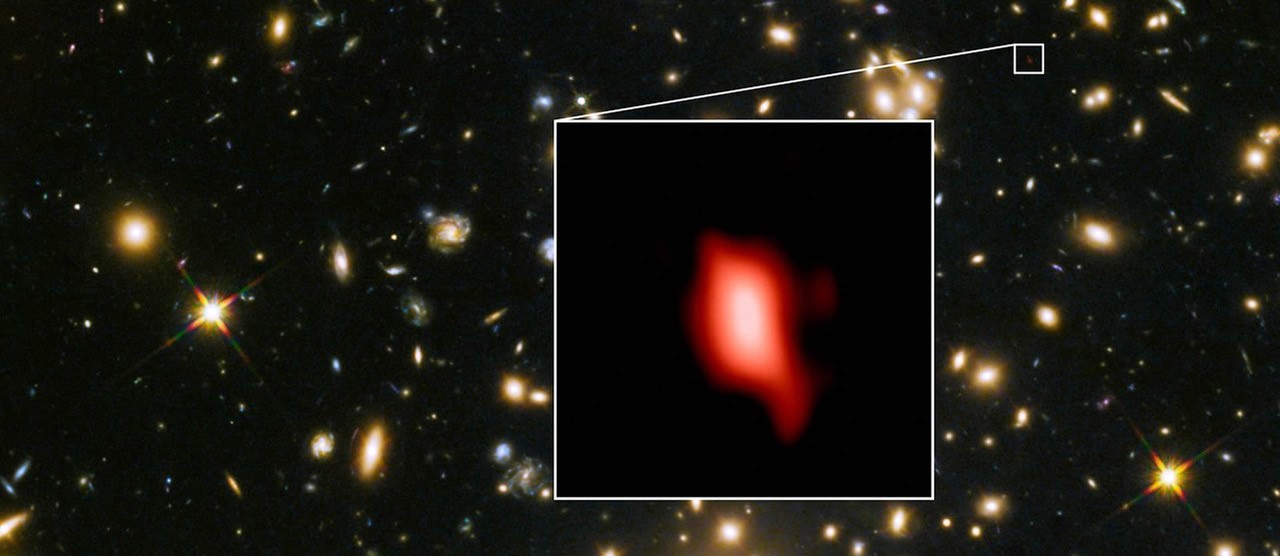Astronomers now have evidence that stars had already formed only 250 million years after the Big Bang
The First Stars

“I was thrilled to see the oxygen signal in the spectrum,” says Takuya Hashimoto, who is based at Osaka Sangyo University and the National Astronomical Observatory of Japan. “This detection pushes back the frontiers of the observable Universe.”
The emission, which reveals the presence of doubly ionized oxygen in MACS1149-JD1, was detected by ALMA, but ESO’s Very Large Telescope (VLT) also picked up a weaker hydrogen signal at the same position. Gratifyingly, its redshift agrees with that calculated for the ALMA signal, confirming the inferred distance to the radiation source. These data mean that MACS1149-JD1 is the most remote galaxy whose redshift has been precisely determined, and the most remote galaxy ever observed by either ALMA or the VLT.
“This galaxy is seen as it was when the Universe was only 500 million years old – and yet it already had a population of mature stars,” explains Nicolas Laporte of University College London (UCL). “We are therefore able us to use this galaxy to probe into an earlier, completely uncharted period of cosmic history.”
For many millions of years after the Big Bang, the Universe was devoid of oxygen. The element was subsequently synthesized by nuclear fusion in the interiors of the first stars, and was disseminated into the interstellar medium when these massive stars became unstable and expired in a catastrophic explosion. The detection of oxygen in MACS1149-JD1 proves that an earlier generation of stars must already have synthesized and lost their oxygen in this way within 500 million years after the beginning of the Universe.
But when did those earlier stars form? To answer this question, Hashimoto and his colleagues reconstructed the history of MACS1149-JD1 on the basis of infrared observations made by the Hubble Space Telescope and NASA’s Spitzer Space Telescope. They found that the observed luminosity of the galaxy can be convincingly accounted for by a model in which star formation is assumed to have begun a mere 250 million years after the Big Bang.
The nature of the stars in MACS1149-JD1 raises the question of when the very earliest galaxies emerged from the primordial darkness, an event which astronomers refer to as ‘cosmic dawn’. The age of MACS1149-JD1 deduced in the new paper effectively proves that galaxies were already in existence prior to the time that is currently accessible to direct observation.
As Richard Ellis, head of group at UCL and one of the authors of the study, states: “Determining when cosmic dawn occurred is akin to the Holy Grail of cosmology and galaxy formation. With these new observations of MACS1149-JD1, we are getting closer to directly witnessing the birth of starlight! Since we are all made of processed stellar material, this is really finding our own origins.”
Publication:
The onset of star formation 250 million years after the Big Bang” (Nature, 17. Mai 2018)










